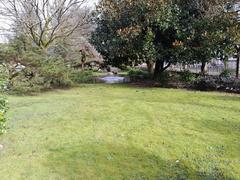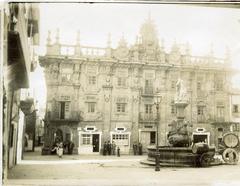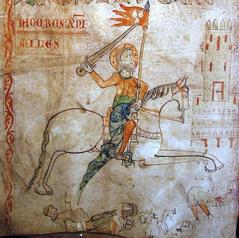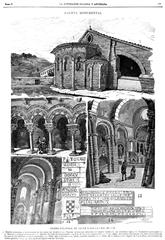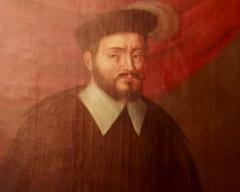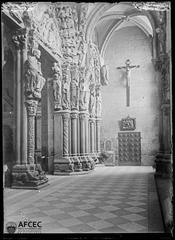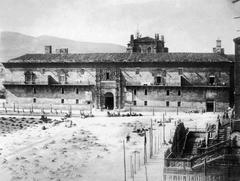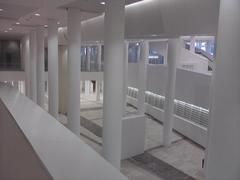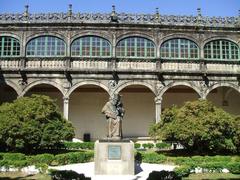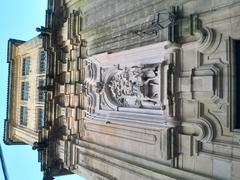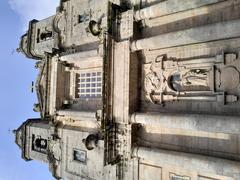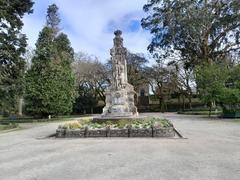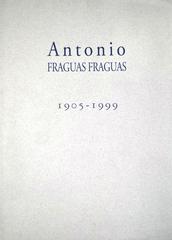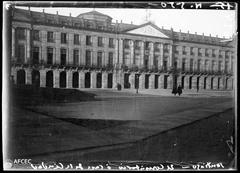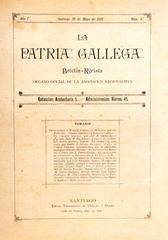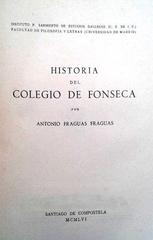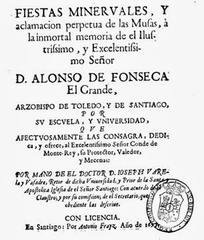
Antitubercular Sanatorium Santiago De Compostela
Antitubercular Sanatorium Santiago De Compostela: Visiting Hours, Tickets, and Travel Guide
Date: 04/07/2025
Introduction
The Antitubercular Sanatorium Santiago de Compostela—officially known as the Sanatorio Antituberculoso Profesor Gil Casares—is a landmark of both medical history and early 20th-century architecture in Galicia, Spain. Originally established in 1928 as a reformatorium for minors, it became a dedicated tuberculosis sanatorium by 1938, reflecting Spain’s urgent response to a devastating epidemic. The sanatorium’s history, architectural significance, and evolving role in public health make it a unique cultural destination within the UNESCO-listed city of Santiago de Compostela (Local Government of Galicia, Galician Historical Archives, UNESCO).
Today, the site—now Hospital Profesor Gil Casares—offers visitors guided tours that reveal the intertwined stories of medicine, architecture, and social welfare. This guide provides in-depth details on its origins, significance, visiting hours, ticketing, accessibility, and nearby attractions, ensuring a comprehensive experience for those interested in both medical heritage and Galician culture (Hospital Profesor Gil Casares Official Site, Galicia Tourism Board).
Table of Contents
- Origins and Early Transformation
- Structure, Facilities, and Staffing
- Tuberculosis in Spain: Historical Context
- Architectural and Cultural Significance
- Visiting the Sanatorium: Practical Information
- The Baltar Sanatorium: History and Visiting Tips
- Frequently Asked Questions (FAQ)
- Conclusion and Visitor Tips
- References and Further Reading
Origins and Early Transformation
The Sanatorio Antituberculoso Profesor Gil Casares was originally conceived in 1928 as a reformatorium for minors, reflecting early 20th-century social policies focused on the care and rehabilitation of vulnerable youth. By 1938, as tuberculosis (TB) became a leading cause of death in Spain, the building’s function shifted to a specialized TB sanatorium named after Professor Miguel Gil Casares, a prominent medical academic. The institution’s mission was rooted in social commitment, prioritizing care for indigent patients and advocating for the then-modern principles of fresh air, rest, and nutrition in TB management (Local Government of Galicia, Galician Historical Archives).
Structure, Facilities, and Staffing
The sanatorium was designed as a self-contained medical complex with a strong rationalist architectural influence—prioritizing function, hygiene, and patient well-being. Key components included:
- Medical Facilities: Operating room, laboratory, examination room, pharmacy, and X-ray department.
- Residential Quarters: Living accommodations for nurses, nuns, and medical staff.
- Religious Spaces: A chapel underscoring the Catholic Church’s integral role in Galician healthcare.
- Staff: At opening, the team included physicians, nurses, nuns, and support personnel, all dedicated to comprehensive TB care (Hospital Profesor Gil Casares Official Site).
Tuberculosis in Spain: Historical Context
During the early 20th century, TB was a public health crisis in Spain and throughout Europe, disproportionately affecting the poor. Sanatoria like this one played a vital role in offering specialized care before effective antibiotics became widely available. The institution’s focus on the social determinants of health—nutrition, rest, and environment—was cutting-edge for its time.
With the introduction of antibiotics such as streptomycin and isoniazid in the mid-20th century, TB mortality rates plummeted, and the need for dedicated sanatoria gradually diminished. The site transitioned to its current incarnation as Hospital Profesor Gil Casares, adapting to broader healthcare needs (Galicia Tourism Board).
Architectural and Cultural Significance
The sanatorium is a prime example of rationalist architecture in Galicia, characterized by expansive windows, sun terraces, and landscaped gardens designed to optimize patient recovery. The presence of religious and social service staff highlights the period’s integration of healthcare, religion, and social welfare. Today, the building is a protected heritage site and continues to serve both medical and educational purposes (UNESCO, Santiago Turismo).
Visiting the Sanatorium: Practical Information
Visiting Hours and Tickets
- Hours: Tuesday to Sunday, 10:00 AM–6:00 PM; closed Mondays and major public holidays.
- Tickets: General admission €5; reduced rate €3 for students, seniors, and groups; free for children under 12. Guided tours (recommended) may incur an additional fee and operate at 11:00 AM and 4:00 PM. Advance booking is advised, especially for English-language tours (Santiago Turismo).
Access and Transportation
- Location: Around 3 km from Santiago de Compostela’s city center
- Transportation: Public bus lines 5 and 9 stop nearby. Taxis and ample parking are available. The route is walkable or cyclable, though some sections are uphill.
Accessibility
- Facilities: Modern ramps, elevators, accessible restrooms, and lockers are available. Contact the administration in advance for specialized assistance or to arrange accessible tours.
Guided Tours
Tours in Spanish, Galician, and English (subject to availability) last 60–90 minutes, exploring the sanatorium’s history, architecture, and public health legacy. Self-guided options include audio guides and interpretive panels with historical context and personal testimonies.
Nearby Attractions
- Parque de San Domingos de Bonaval: Ideal for walks and panoramic city views.
- Museo do Pobo Galego: Explores Galician culture and social history (Museo do Pobo Galego).
- Cathedral and Old Town: Both UNESCO-listed, these sites are easily combined with a visit to the sanatorium.
The Baltar Sanatorium: History and Visiting Tips
Historical Overview
The Baltar Sanatorium, established in 1922, was another key institution in Santiago’s battle against tuberculosis. Like the Gil Casares sanatorium, it was built on the city’s outskirts to maximize exposure to fresh air—a core belief in TB treatment at the time. The Baltar Sanatorium closed in the 1970s as antibiotics rendered such facilities less necessary, and no physical structures remain today (Britannica, Reddit: Lost Architecture).
How to Engage with Its Legacy
- Museums: The Museo do Pobo Galego offers insights into the region’s social and medical history.
- Historic Hospitals: The Royal Hospital (Hostal dos Reis Católicos) illustrates centuries of healthcare evolution.
- Guided Tours: Join walking tours on Santiago’s healthcare history for deeper context.
Frequently Asked Questions (FAQ)
Q: What are the visiting hours for the Antitubercular Sanatorium?
A: Tuesday to Sunday, 10:00 AM to 6:00 PM; closed Mondays.
Q: Are there guided tours?
A: Yes, at 11:00 AM and 4:00 PM, in multiple languages. Advance booking is recommended.
Q: Is the site wheelchair accessible?
A: Yes, most areas are accessible, but some historic sections may have limited access.
Q: Can I take photographs?
A: Yes, personal photography is allowed in most areas, with restrictions on flash and tripods in sensitive zones.
Q: Is the Baltar Sanatorium open to visitors?
A: No, the buildings no longer exist, but the site’s story can be explored through local museums and tours.
Conclusion and Visitor Tips
The Antitubercular Sanatorium Santiago de Compostela stands as a powerful symbol of Galicia’s medical, social, and architectural evolution. Its preservation and adaptive reuse provide a meaningful link between past and present, offering visitors a chance to reflect on public health progress amid beautiful surroundings. For the best experience, book tours in advance, check for seasonal or restoration-related schedule changes, and combine your visit with other local attractions. For more information or to book tickets, visit the official tourism or hospital websites.
References and Further Reading
- Local Government of Galicia
- Galician Historical Archives
- Hospital Profesor Gil Casares Official Site
- Galicia Tourism Board
- UNESCO World Heritage Centre - Santiago de Compostela (Old Town)
- Santiago Turismo
- Museo do Pobo Galego
- Britannica - Santiago de Compostela
- Reddit: Lost Architecture – Baltar Sanatorium

